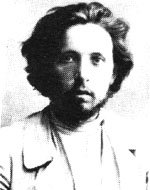Salzman, Yosef
Son of Leib. He was born in 1890 in Warsaw, Poland, where he worked as an assistant in a fabric store, and as a friend of those days, he described his work faithfully, but at the same time hated it. He later became active in the Jewish self-defense organization and served as a locksmith in the installation of weapons for this organization, and joined the socialist Zionist movement “Poalei Zion”. In 1905, when strikes against the government were raging throughout Russia and many striking workers were left with no means of subsistence, he was arrested twice for his membership in Poalei Zion. He was deported to Siberia, but illegally managed to reach Vienna, and in 1907 immigrated to Eretz Israel, where he worked first in Petach Tikvah and later in Hadera, where he belonged to the “Working Group,” which dealt with cutting wood in the forest. The poet David Shimoni dedicated his poem “In the Forest of Hadera” to his memory, and later moved to the Kinneret farm, where he was concerned about the small number of Jewish workers for the introduction of Hebrew labor. At that time he approached the Ben Zion group, which was then working in Sejera. In 1911 he returned to Warsaw to enlist in the Russian army, to prevent his parents from paying a fine for failing to attend military service, but he wanted to desert and return to Israel. This was made possible after the finger of his hand was cut off with weapon training as part of Jewish self-defense. In Israel he returned to the Kinneret farm and was one of the founders of the Kinneret group. He was well acquainted with his friends in the group and also liked the other pioneers, the conquerors of Hebrew labor in Eretz Israel. As a friend of the period described: “… big blue eyes, like the color of the Sea of Galilee in calm summer days, and a constant smile on his face.” One evening, 24 Cheshvan 5714 (24.11.1913), three weeks from the beginning of the occupation of the Sea of Galilee, after he had cleared the animals from the plow and traveled with his friend in the cart back home, he was shot to death by murderers. According to the hypothesis, the assassination was a blood feud over the fact that one of the rioters was wounded two days earlier during a battle in which members of the Degania group were killed by rioters. He was buried in the place where he fell near the Jordan River, on the road to Beitnia. Fifty years after his murder, a book was published in his memory and a marble plaque was added to his grave, on which the words were engraved: “He fell in Heshvan 1913 in the first month of our settlement and he is next to the plow.” His name was immortalized in the books “The Garden and the Hill,” “Degania A” and Fighters”.
